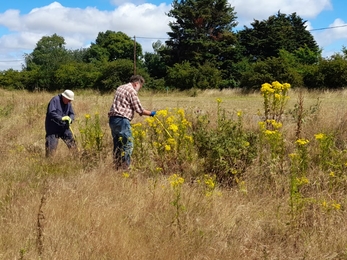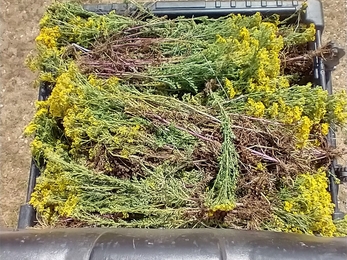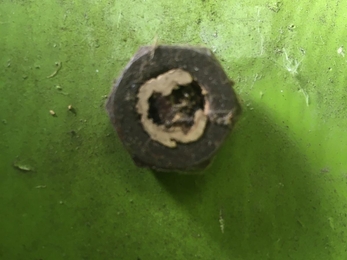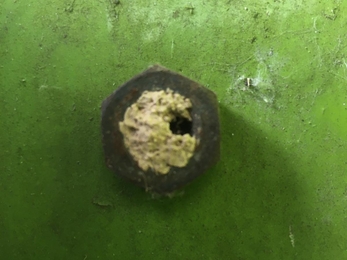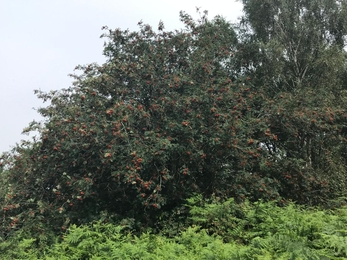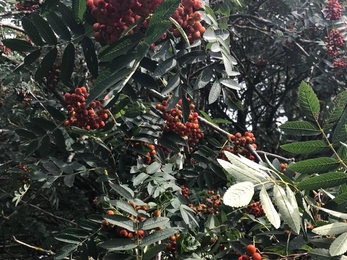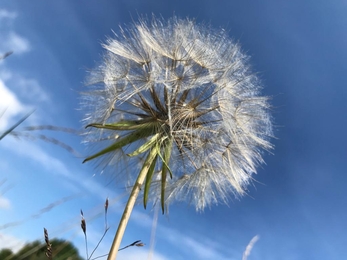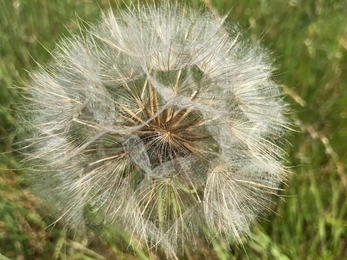Weekly wild news from our reserves - 15 July 2022
Cinnabar moth caterpillars eating ragwort, Lound Lakes, Andy Hickinbotham, July 22
This week, our amazing team of volunteers at Carlton Marshes helped Wardens Lewis Yates and Gavin Durrant create some wooden barriers to help keep cars away from the footpaths. Their hard work immediately paid dividends as shown by these before and after pictures.
The Carlton Marshes volunteers also helped clear some of the ragwort from the carpark area. Ragwort is a native species and is incredibly valuable for a number of species, but we strike a balance between keeping some for its wildlife value and making sure we respect our neighbours who have livestock. You can find out more about ragwort and why it can be a contentious issue in the countryside here.
Nature’s control mechanisms
Lound Lakes Warden Andrew Hickinbotham has been taking a look at the effect of cinnabar moth caterpillars on patches of ragwort around the reserve. Andy says, “Cinnabar moth caterpillars have completely eaten some patches of ragwort, leaving a bare-stalked desert in some locations, but are totally missing in others, as these photos show.”
The yellow and black-stripped caterpillars rely on ragwort foliage and flowers for food before they turn into beautiful red and black day-flying moths. It’s a good example of why ragwort a very important plant for many invertebrates and how nature can be excellent at preventing certain species from dominating.
There’s no place like home
Our West Suffolk sites manager, Will Cranstoun, spotted this amazing mason bee cocoon inside one of the metal nuts on the baler at Lackford Lakes. It’s amazing how adaptable animals are and how they make use of the resources available to them.
Foxburrow Finds
Wild Learning Officer Emma has been getting our Young Wardens and Wild in the Week kids involved in monitoring the natural regeneration at Foxburrow Farm. They have already carried out earth worm surveys in the new fields and compared their findings with the existing grazed meadows. They have also had a fab session with the Suffolk Archaeological Field Group identifying their finds! You can read more about how we’re rewilding Foxburrow here.
Volunteers save the day, again
Our volunteers never cease to amaze us with their dedication to wildlife and our nature reserves. This week, our Knettishall Heath volunteers helped move around 200 tyres that had been fly-tipped at the reserve. Warden Sam Norris explains, “The tyres are thankfully going to be used by a neighbour to build a driveway. Our brilliant team of volunteers had good fun rolling them up the track, and we’re pleased that they can be upcycled.”
Masses of pings, without the pong...
Warden Jamie Smith came across this lovely family group of bearded tits intensely ‘pinging’ at Hen Reedbeds while doing his livestock checks in the morning. Also known as the bearded reedling, they are sociable little birds that thrive in reedbed habitats. You can often hear them before you see them – listen out for those distinctive calls.
Bearded-tits calling at Hen Reedbeds, Jamie Smith (https://youtu.be/5V5bHpTswcQ)
Bearded-tits at Hen Reedbeds, Jamie Smith
Dry weather
Knettishall Heath Warden Sam Norris has shared these photos of an extremely dry heath. The hot, dry weather is suppressing the flora but some plucky little harebells are hanging on. The ponies are seeking the shade of the beautiful veteran beech trees at the moment, too.
Seeing red, and yellow
At Lound Lakes the blackberry bushes have been hit by yellow rust fungus – the undersides of the leaves look like they’ve been dusted with sulphur.
Also at Lound, Warden Andy is excited by the generous crop of berries developing on the rowan trees – he's looking forward to seeing flocks of winter thrushes feasting on them once they’re fully ripe.
Goat’s beard
Who doesn’t love a dandelion seed clock? Warden Andy spotted these at Lound Lakes. A member of the Asteraceae family, it’s also known as Jack-go-to-bed-at-noon.
And finally...
Warden Joe Underwood has captured an image of a juvenile marsh harrier at Trimley Marshes. This is one of a pair of young marsh harriers on the reserve at the moment practicing their skills and causing havoc!
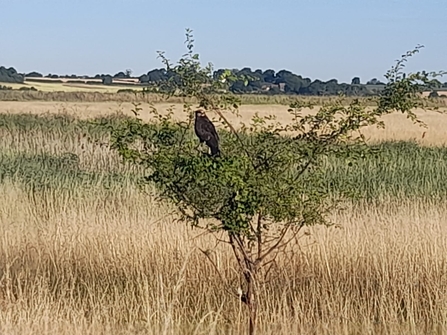
Juvenile marsh harrier at Trimley Marshes, Joe Underwood, July 22




